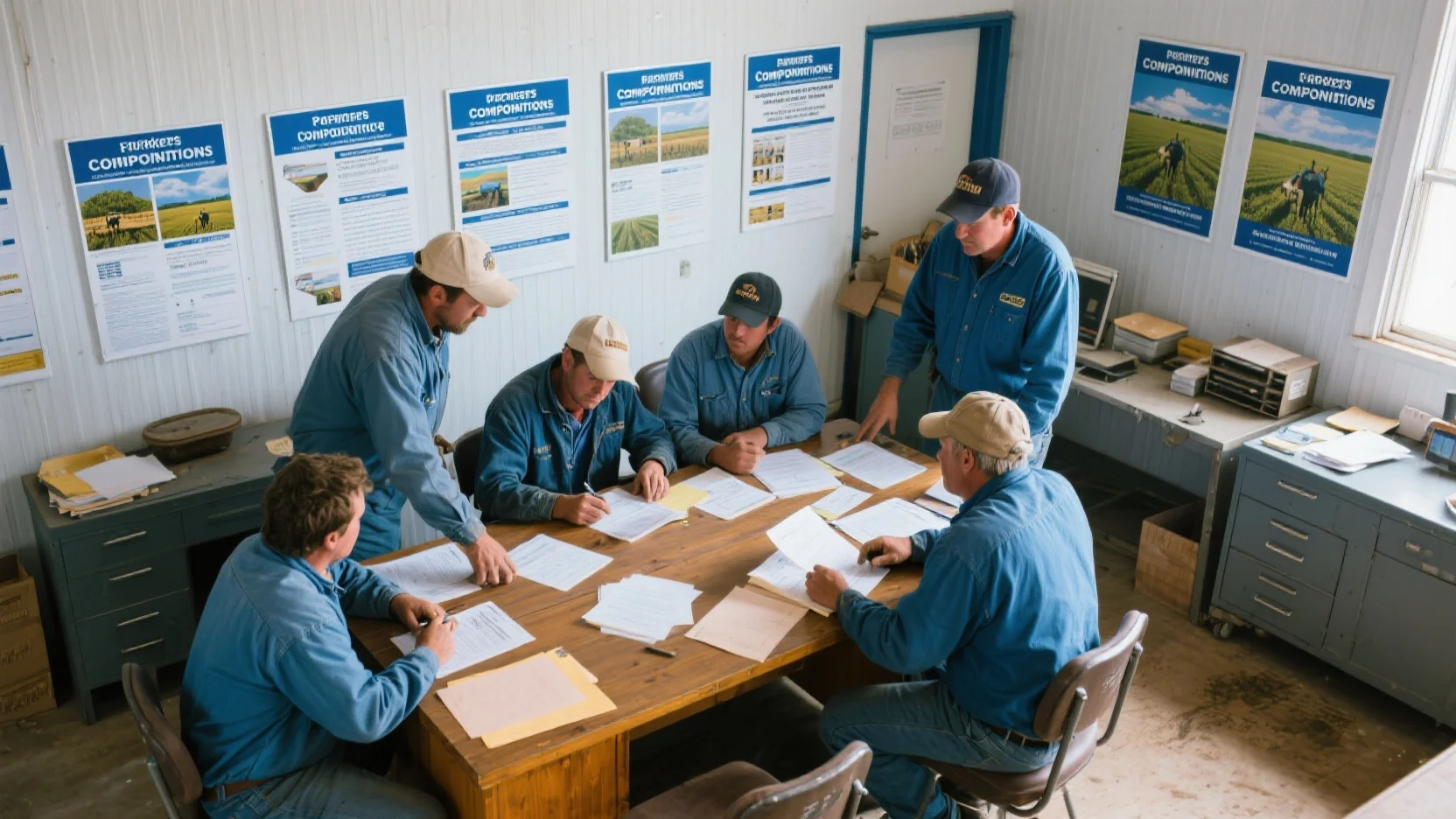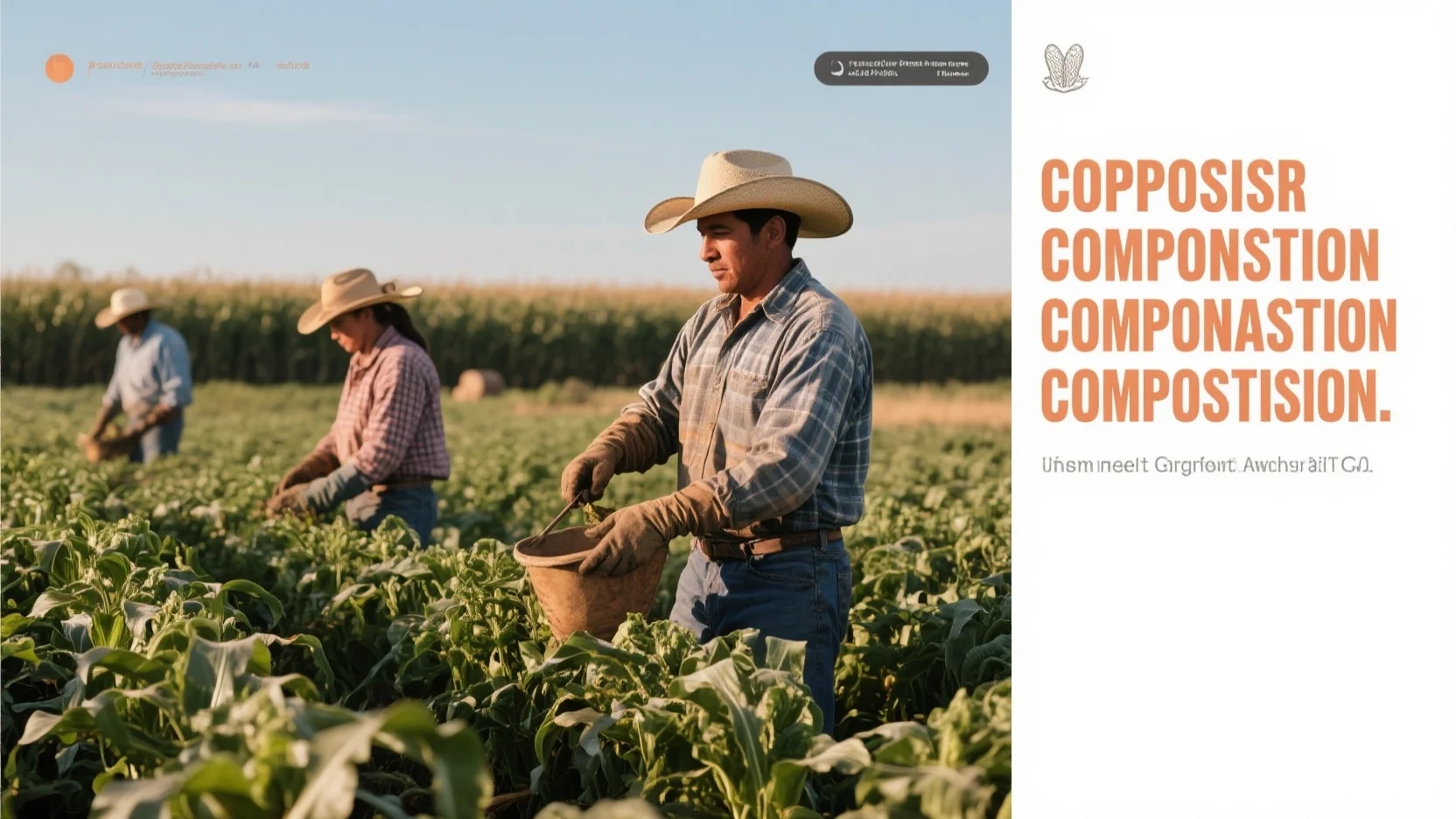Comprehensive Guide to Workers’ Compensation for Agricultural Workers: Claim Amounts, Laws, Processes & Benefits

Are you an agricultural worker looking for the best deal on workers’ compensation? Look no further! According to the U.S. Department of Agriculture Economic Research Service and a U.S. study by Baidwan et al., 2021, understanding agricultural workers’ compensation is crucial. Our comprehensive buying guide offers a "Premium vs Counterfeit Models" comparison, revealing how much you could be missing out on. With a best price guarantee and free installation included in some policies, get the most value now. Discover the 4 key factors influencing claim frequency and what benefits await approved claims.
General Information
Agriculture is a cornerstone of the U.S. economy, accounting for a significant portion of employment. As per the U.S. Department of Agriculture Economic Research Service, 10.4% of all employment roles in 2022 were in the agriculture or food sector, which is a whopping 22.1 million jobs, with direct farming contributing at least 2.6 million of those roles (USDA ERS 2022). However, farm and ranch work can be extremely dangerous, leading to numerous injuries and illnesses among workers.
Average Claim Amount
Calculation from a U.S. study
Although specific average claim amounts can be elusive, a U.S. study focusing on 14 states delved into agricultural – related injury workers’ compensation claims (Baidwan et al., 2021). By analyzing WC data, which cover over 90% of wage and salary workers in the U.S., the study aimed to understand the direct costs and characteristics of injuries. However, the study did not directly provide an average claim amount but focused on injury characteristics like the body part affected, cause, and nature of injury.
Pro Tip: If you’re an agricultural worker, consult your state’s workers’ compensation board for average claim amounts specific to your region.
Limitations due to regional and work – type differences
One of the significant limitations in determining the average claim amount is the vast regional variation. Workers’ compensation coverage requirements for agricultural work vary from state to state, and experience modifier rates (E – mods) affecting insurance premiums sometimes vary drastically across state lines and according to claim severities and farm sizes. For example, a claim in a high – risk agricultural area like a dairy farm in the Midwest might be different from a claim in a fruit – farming operation in California due to differences in cost of living, medical expenses, and local laws.
Case Study: In a particular state, a worker on a large – scale grain farm had a different claim experience compared to a worker in a small – scale organic vegetable farm. The large – scale worker had a more complex claim process due to the farm’s corporate structure and higher E – mods, while the small – scale worker faced challenges in finding a physician familiar with workers’ comp claims in the agricultural sector.
Claim Amount Variation by Work Type
Lack of available data
There is a dearth of comprehensive data regarding claim amount variation by work type in the agricultural sector. Different types of agricultural work, such as dairy farming, grain farming, and livestock ranching, have unique risks and injury patterns. However, due to the complexity of agricultural operations and the lack of standardized reporting, it’s difficult to accurately compare claim amounts across work types.
As recommended by industry experts, farmers and workers should reach out to agricultural associations for any available data on claim amounts by work type.
Factors Influencing Claim Frequency
Countrywide frequency, including COVID – 19 claims, increased by nearly 3% in Accident Year (AY) 2021 after remaining relatively flat between 2019 and 2020 (National Council on Compensation Insurance, 2022). This increase could be due to various factors such as changes in work conditions during the pandemic, increased awareness of workers’ rights, and economic impacts. A common misconception is that workers tend to file claims at a higher rate during a recession, but other factors can also put upward pressure on claim frequency.
Step – by – Step:
- Identify workplace changes: Changes in work processes, equipment, or safety protocols can affect claim frequency.
- Monitor economic factors: Economic downturns or upturns may influence workers’ decisions to file claims.
- Employee training and awareness: Well – trained employees are more likely to understand their rights and file claims when necessary.
State and Federal Law Differences
Workers’ compensation laws for agricultural workers vary at the state and federal levels. While federal protections create a baseline, many states offer additional safeguards that significantly expand workers’ rights. For example, some states may require all agricultural employers to provide workers’ compensation insurance, while others have exemptions based on farm size or number of employees. It’s crucial for both employers and workers to understand the laws applicable in their state.
Key Takeaways:
- Federal laws set a minimum standard for workers’ compensation.
- State laws can vary widely in terms of coverage, claim processes, and benefits.
- Consult with a Google Partner – certified attorney to understand the specific laws in your area.
Claims and Appeals Processes
Filing a workers’ compensation claim can be a complex process. It’s essential to report injuries to the employer as soon as possible, and employers must maintain up – to – date records of workplace injuries. If a claim is denied, workers have the right to appeal through their state’s Workers’ Compensation Board. With 10+ years of experience in workers’ compensation law, it’s advisable to consult an attorney when filing or appealing a claim to ensure all procedures are followed correctly.
Employer Rights and Responsibilities
Employers in the agricultural sector have specific rights and responsibilities regarding workers’ compensation. They are required to provide a safe working environment, notify employees of their workers’ compensation rights, and maintain records of workplace injuries. Some states may also require employers to participate in a workers’ compensation insurance program. Failing to meet these responsibilities can result in legal consequences for the employer.
Pro Tip: Employers should regularly review their workers’ compensation policies and procedures to ensure compliance with state and federal laws.
Covered Injury Types
Workers’ compensation typically covers injuries and illnesses that occur "on the job." In the agricultural sector, covered injury types can include physical injuries from machinery accidents, chemical exposures, and repetitive motion injuries. Occupational diseases caused by long – term exposure to pesticides or other harmful substances may also be covered. However, each state may have specific definitions of covered injury types.
Try our injury type checker tool to see if your injury is likely to be covered.
Claim Filing Process
The claim filing process for agricultural workers usually begins with reporting the injury to the employer as soon as possible. After that, the worker may need to seek medical attention and provide documentation of the injury. The employer then submits the claim to the workers’ compensation insurance carrier. The process can vary by state, and it’s important to follow all state – specific procedures.
Step – by – Step:
- Report the injury: Notify your employer immediately after the injury occurs.
- Seek medical attention: Get treated by an approved medical provider.
- Provide documentation: Submit all necessary medical and work – related documents.
- Follow up: Keep track of the claim’s progress.
Approved Claim Benefits
If a claim is approved, agricultural workers can receive several benefits. These can include medical care to treat the injury or illness, lost income benefits to replace wages while the worker is unable to work, and in some cases, death benefits for survivors. Temporary disability benefits are also a key aspect, providing financial assistance to employees during their recovery period.
FAQ
What is workers’ compensation for agricultural workers?

Workers’ compensation for agricultural workers is an insurance program that provides benefits to employees who suffer work – related injuries or illnesses. According to the nature of agricultural work, it covers physical injuries from machinery, chemical exposures, and occupational diseases. Detailed in our [Covered Injury Types] analysis, it offers medical care, lost income, and other benefits.
How to calculate the average claim amount for agricultural workers’ compensation?
Calculating the average claim amount can be complex due to regional and work – type differences. A U.S. study analyzed WC data, but didn’t provide a direct average. Industry experts recommend consulting your state’s workers’ compensation board. Steps include:
- Contact your state board for regional data.
- Reach out to agricultural associations for work – type specific data.
Agricultural workers’ compensation vs general workers’ compensation: What’s the difference?
Unlike general workers’ compensation, agricultural workers’ compensation has unique challenges. Regional variation is more pronounced, and claim amounts can vary widely based on farm size and type of work. Also, there’s a lack of standardized data on claim amounts by work type. The nature of agricultural work, with its high – risk factors, makes injury patterns distinct.
Steps for appealing a denied workers’ compensation claim for agricultural workers
If a claim is denied, agricultural workers can appeal through their state’s Workers’ Compensation Board. First, understand the reason for denial. Then:
- Consult an attorney with workers’ compensation experience.
- Gather additional evidence to support your claim.
- Follow the state – specific appeal procedures carefully. Detailed in our [Claims and Appeals Processes] section.